Please read the previous posts before replying, unless directly answering the current question. I know people are just trying to help, but there has been a lot of progression from the original design that WILL work with the driver I've chosen.very small box and 10Hz goes against all science.
The LMS5400 ($900+ driver) is the only driver built well enough to go in a 3cuft box and do serious SPL down low. Its a very special driver because of that!!
also why is there a discussion of 2 cuft vs 1.94 cuft....it won't be different not matter which volume you end up with. Splitting hairs over anything under even 5-7% volume difference isn't going to matter in terms of in room performance.
If you are building a small box I would not even model to worry about a Q of .7, just stuff it, EQ it in room after you build it. Its pretty basic stuff really just do not expect low, low frequency output. You require large displacement for the lowest octave output.
The last post on pg. 3 has all my final calculations and ideal/theoretical design dimensions. see page 2 for spl, excursion, load, etc graphs that show why this will work.
Anyway, would someone please help me understand whether or not to stuff in a smaller than designed enclosure in order to reach a volume of 1.94ft^3 and a q of .707, or do I build an enclosure with 1.94ft^3 and then stuff it? It seems like I should do the former. I just need help determining how much polyfill to put in. Calcs on pg. 3 Show roughly 2.238lbs to achieve effective volume of 1.94ft^3.
very small box and 10Hz goes against all science.
The LMS5400 ($900+ driver) is the only driver built well enough to go in a 3cuft box and do serious SPL down low. Its a very special driver because of that!!
also why is there a discussion of 2 cuft vs 1.94 cuft....it won't be different not matter which volume you end up with. Splitting hairs over anything under even 5-7% volume difference isn't going to matter in terms of in room performance.
If you are building a small box I would not even model to worry about a Q of .7, just stuff it, EQ it in room after you build it. Its pretty basic stuff really just do not expect low, low frequency output. You require large displacement for the lowest octave output.
"You require large displacement for the lowest octave output."
Not true. Displacement + surface area of the cone is related to amplitude, not frequency. Drivers intended for loud low frequencies in a sealed enclosure usually have long maximum excursion capabilities because you are throwing away half their ouput, the radiation coming from the back. But it is not necessary to have long excursion capability to reproduce low frequencies. Proof? Headphones which can go to 20 hz with minimal excursion.
The ability to reproduce low frequencies depends on the combined electrical and mechanical resonance characteristics of the system. An equalizer creates resonances at some selected frequencies to compensate for others in the same system. Loudspeakers are inherently resonant devices, usually only good for about 2 or 3 octaves depending on their construction. Combining them to create a system that in totality seems to be non resonant over a much wider range is the challenge.
The correct amount of stuffing for a sealed acoustic suspension system to achieve a desired Q is usually IMO determined by trial and error. There are simply too many variables unless you are familiar with the particular stuffing and driver in question. Generally cookbook recipes don't work, and yes it does matter. Overdamping unnecessarily throws away valuable bass, the whole point of designing a subwoofer in the first place while underdamping creates an FR hump which requires time and effort to compenaste for accurately with an equalizer although it can be done.
The Dayto RSS315HF-4 should be capable of producing low distortion accurate bass to a loud level to the lowest audible frequencies. Some equaliztion may be required.
"You require large displacement for the lowest octave output."
Not true. Displacement + surface area of the cone is related to amplitude, not frequency. Drivers intended for loud low frequencies in a sealed enclosure usually have long maximum excursion capabilities because you are throwing away half their ouput, the radiation coming from the back. But it is not necessary to have long excursion capability to reproduce low frequencies. Proof? Headphones which can go to 20 hz with minimal excursion.
The correct amount of stuffing for a sealed acoustic suspension system to achieve a desired Q is usually IMO determined by trial and error. There are simply too many variables unless you are familiar with the particular stuffing and driver in question. Generally cookbook recipes don't work, and yes it does matter. Overdamping unnecessarily throws away valuable bass, the whole point of designing a subwoofer in the first place while underdamping creates an FR hump which requires time and effort to compenaste for accurately with an equalizer although it can be done.
The Dayto RSS315HF-4 should be capable of producing low distortion accurate bass to a loud level to the lowest audible frequencies. Some equaliztion may be required.
Loud is relative, it takes over 100 dB SPL for our ear to perceive 20 Hz at the same "loudness" as 1000 Hz at only 70 dB SPL.
The OPs speaker will not be able to do that without exceeding thermal and excursion limitations.
As the frequency is halved, cone excursion typically increases by a factor of four in sealed box until the air spring is to tight to allow additional excursion. Four times the excursion is required for the same SPL for each octave lower extension, it is easy to see that either very large cone area or very long excursion is needed to achieve loud LF output in a sealed enclosure.
The headphone example does not negate the above, the reason headphones can do loud low bass is simply because they are close to the ear, the inverse square law states for every reduction in distance to the source by 1/2, level is increased by 6 dB.
Measure the headphone at one meter instead of 15 mm, the low frequency output will be useless.
The inverse square law can be used to the OPs advantage, the closer the sub(s) are to his ear, the louder they will sound.
I agree with your observations regarding stuffing.
A pair of AR1s with about a 12mm max excursion, about what these drivers are capable of can fill the average home listening room with bass that is powerful, deep, and undistorted. In the LvR demo back in the mid 1950s conducted by the NY Audio League, what AES was called in those days, it took only 4 to play at a volume sufficient to compare to the Aolean Skinner pipe organ at Riverside church in upper Manhattan. This was done using four 150 watt Western Electric amplifiers. This type of speaker however is not intended to blast rock music at ear shattering levels nor to fill theaters the way horn type speakers are unless many pairs of them are used. They are not suitable for rock concerts. However, as high fidelity loudspeakers for home use playing serious music accurately, they'll usually blow most other designs away. Even a large expensive speaker like Klipschorn is no match for an AR1 in the lowest audible octave.
I built a 6 cu ft. ported sub with 15" driver and F3 at 24 Hz. It can make some powerful bass with low power, but I find the human ear issue is so true. I have found my wooden floor to resonate at 20Hz, water in the sink to make waves at ~18hz and things to vibrate at these low frequencies that normally don't with smaller speakers. However, I just don't hear the deep bass nearly as powerfully as with frequencies in the 30s and up. I guess nature didn't intend on our ears to be sensitive to very low frequencies. I have been quite content with my designs that F3 in the 30-35Hz range.
A lot of newcomers fall into the trap that they should make the speaker flat to some very low frequency. The bass will not be so powerful sounding as imagined.
I'm not saying he should not build this. If he has experienced a similar design and was happy with the sound, more power to 'em (pardon the pun).
A lot of newcomers fall into the trap that they should make the speaker flat to some very low frequency. The bass will not be so powerful sounding as imagined.
I'm not saying he should not build this. If he has experienced a similar design and was happy with the sound, more power to 'em (pardon the pun).
I built a 6 cu ft. ported sub with 15" driver and F3 at 24 Hz. It can make some powerful bass with low power, but I find the human ear issue is so true. I have found my wooden floor to resonate at 20Hz, water in the sink to make waves at ~18hz and things to vibrate at these low frequencies that normally don't with smaller speakers. However, I just don't hear the deep bass nearly as powerfully as with frequencies in the 30s and up. I guess nature didn't intend on our ears to be sensitive to very low frequencies. I have been quite content with my designs that F3 in the 30-35Hz range.
A lot of newcomers fall into the trap that they should make the speaker flat to some very low frequency. The bass will not be so powerful sounding as imagined.
I'm not saying he should not build this. If he has experienced a similar design and was happy with the sound, more power to 'em (pardon the pun).
It's not so much that hearing the sound is important, but feeling it as well. If we only wanted to hear the sound, we'd build speakers flat to 20Hz and call it good. We build them better than that because we can feel them. While I like good response to as low as my ear should theoretically hear, I am also looking to be able to feel these. Given that they'll be in an HT application for roughly 50% of the time, the feeling that low frequencies produces is very important.
When you say you don't hear them as clearly as frequencies 20Hz and up, it's likely due to two factors. First, our ears rarely actually hear the full 20-20,000Hz range after we're about 6 yrs. old. Not hearing as well is natural as we get older. Second is that there is simply not a lot of content in the low 20Hz and below. Obviously there is some content, but not likely enough to make it as noticeable as frequencies in the 30's and up. Sorry for the somewhat obvious answer (you seem like a knowledgeable person about audio equipment and likely already knew that; that was more for people reading this who may not know that).
High frequency hearing naturally goes away with age, low frequency does not seem affected.When you say you don't hear them as clearly as frequencies 20Hz and up, it's likely due to two factors. First, our ears rarely actually hear the full 20-20,000Hz range after we're about 6 yrs. old. Not hearing as well is natural as we get older. Second is that there is simply not a lot of content in the low 20Hz and below. Obviously there is some content, but not likely enough to make it as noticeable as frequencies in the 30's and up. Sorry for the somewhat obvious answer (you seem like a knowledgeable person about audio equipment and likely already knew that; that was more for people reading this who may not know that).
Although I can't hear above 15,500 Hz (unless the level is loud enough to kill bats), I can still hear below 10 Hz easily.
Our ears simply are not as sensitive at very low and very high frequencies.
Attachments
It's not so much that hearing the sound is important, but feeling it as well. If we only wanted to hear the sound, we'd build speakers flat to 20Hz and call it good. We build them better than that because we can feel them. While I like good response to as low as my ear should theoretically hear, I am also looking to be able to feel these. Given that they'll be in an HT application for roughly 50% of the time, the feeling that low frequencies produces is very important.
When you say you don't hear them as clearly as frequencies 20Hz and up, it's likely due to two factors. First, our ears rarely actually hear the full 20-20,000Hz range after we're about 6 yrs. old. Not hearing as well is natural as we get older. Second is that there is simply not a lot of content in the low 20Hz and below. Obviously there is some content, but not likely enough to make it as noticeable as frequencies in the 30's and up. Sorry for the somewhat obvious answer (you seem like a knowledgeable person about audio equipment and likely already knew that; that was more for people reading this who may not know that).
I can't argue with what you have said. Having my floor resonate at 20Hz is certainly bass you can feel, but this happens at a very narrow range due to resonance. If my house had a concrete slab, I wouldn't feel anything, just hear a rather weak deep bass note. It seems you need a rather large speaker and a lot of power to produce bass you could actually feel at such low frequencies.
Bass you can feel, such as the light "punch" you feel on your chest at live events from the kick drum, is actually from higher frequencies. Perhaps around 50Hz. A lot of the PA gear won't even go near as low as the design here.
Even with my large speaker, covering the ports to make it like a sealed box and playing a 10Hz sine wave, I see the cone moving, but no usable sound.
Anyway, would someone please help me understand whether or not to stuff in a smaller than designed enclosure in order to reach a volume of 1.94ft^3 and a q of .707, or do I build an enclosure with 1.94ft^3 and then stuff it? It seems like I should do the former. I just need help determining how much polyfill to put in. Calcs on pg. 3 Show roughly 2.238lbs to achieve effective volume of 1.94ft^3.
Build the box within a 10% tolerance of the model you want then stop thinking .238lbs of stuffing is going to matter whatsoever. You should be EQing the final product anyways so stuff like everyone else. Pick 1, 1.5 or 2.0 lbs and enjoy!!
You have to understand that all this splitting hair discussion has no bearing on the final SQ.
Last edited:
It's not so much that hearing the sound is important, but feeling it as well. If we only wanted to hear the sound, we'd build speakers flat to 20Hz and call it good. We build them better than that because we can feel them. While I like good response to as low as my ear should theoretically hear, I am also looking to be able to feel these. Given that they'll be in an HT application for roughly 50% of the time, the feeling that low frequencies produces is very important.
When you say you don't hear them as clearly as frequencies 20Hz and up, it's likely due to two factors. First, our ears rarely actually hear the full 20-20,000Hz range after we're about 6 yrs. old. Not hearing as well is natural as we get older. Second is that there is simply not a lot of content in the low 20Hz and below. Obviously there is some content, but not likely enough to make it as noticeable as frequencies in the 30's and up. Sorry for the somewhat obvious answer (you seem like a knowledgeable person about audio equipment and likely already knew that; that was more for people reading this who may not know that).
Im with you....
There is definitely content below 10Hz. Many of us with uber bass systems understand what exists and its a funny discussion always with those who do not have a quality bass sytems. They use their subjective experience has fact, those with atleast 4 x 18" IB design and >= 25 liters know all about quality bass down below 20Hz, 15Hz and even 10Hz.
The biggest problem is that the reference point of most members here is a musical one. I have yet to see a member with even a quality subwoofer system on this site compared to those found on AVS or HTS.
Of course this get back to my point about small sealed sub....that is not the right design to get lowest octave content IF your requirements dictate a single box. I know you posted that you already understand that though but its important that people understand high performance bass is ALL about overall output/displacement.
The biggest problem is that the reference point of most members here is a musical one. I have yet to see a member with even a quality subwoofer system on this site compared to those found on AVS or HTS.
Ahem.
High frequency hearing naturally goes away with age, low frequency does not seem affected.
Although I can't hear above 15,500 Hz (unless the level is loud enough to kill bats), I can still hear below 10 Hz easily.
Our ears simply are not as sensitive at very low and very high frequencies.
The in room compression levels down low and the feeling people have who own the best setups know what is possible. Its simply amazing all other rooms/movie theaters suck comparatively. Its just not even a choice once you have had the right experience.
If some people can not do 10Hz that is just a choice. Others choose to have a bass system that covers 100% of all octaves. To feel/experience 10Hz, people require > 110dB.
Ahem.
Sorry
Im happy to be corrected. Im definitely interested in who has quality HT systems here but it seems all discussions are about music and systems that are built with that as a priority. Most threads here are horn subs and few even go below 30Hz, I build and enjoy HT systems. My focus is on the best HT performance I can get. A recent movie "Battle field LA" may suck according to the critics but the < 10Hz is sick!!! Its still a choice if people want that content played back in their rooms.
Not an HT system, but subs which will happily crank out very deep bass at high levels. Two 10 cu ft sealed boxes with JBL 2245H, floor-firing, and EQed. This augments the bottom end of a pair of NHT M3.3, not exactly bass slouches themselves.
NHT 3.3 was designed by Ken Kantor who had worked at Acoustic Research and now works for Tymphany. Ken based the design on the Tonegen 1259 which was patterned after the AR 12" woofer. It's main disadvantage over Villchur's original AR design is that it has about twice the Vas as the original AR version and therefore requires a box twice as big. It is an excellent driver however. Unfortunately it is no longer available.
Late manufactured AR 12" drivers were actually manufactured by Tonegen probably OEM under license. They are distinguished from earlier versions by their square magnets.
Im with you....
There is definitely content below 10Hz. Many of us with uber bass systems understand what exists and its a funny discussion always with those who do not have a quality bass sytems. They use their subjective experience has fact, those with atleast 4 x 18" IB design and >= 25 liters know all about quality bass down below 20Hz, 15Hz and even 10Hz.
The biggest problem is that the reference point of most members here is a musical one. I have yet to see a member with even a quality subwoofer system on this site compared to those found on AVS or HTS.
Of course this get back to my point about small sealed sub....that is not the right design to get lowest octave content IF your requirements dictate a single box. I know you posted that you already understand that though but its important that people understand high performance bass is ALL about overall output/displacement.
Yeah, I totally agree (though I do see a lot of people doing HT builds). I know my design isn't perfect, but it is a great offering given the size and performance. I can always build another identical sub and get some incredible performance down the road, but for now I'll just have to settle for really good performance. I simply don't have the space in my dorm for two subwoofers (or the need, really).
As for stuffing, I'll just start with 2lbs as and go from there. Trial an error at its best!
Big Milestone and Beginning of Worklog
Big progress with these. Finally finished making the boxes. Bracing is a bit excessive, but the resonant frequency should be about ten times higher than the xo point. Only things left to do are to glue the panels, fill holes/gaps with wood putty, prime/seal, paint, and wrap them in vinyl (Oracal 651 matte black if anyone is interested). Then I need to fill with pink fiberglass insulation and install the driver. I'm using a Neutrik NL2MP for the speaker connector instead of binding posts. So, without much more ado, i give thee subwoofers!
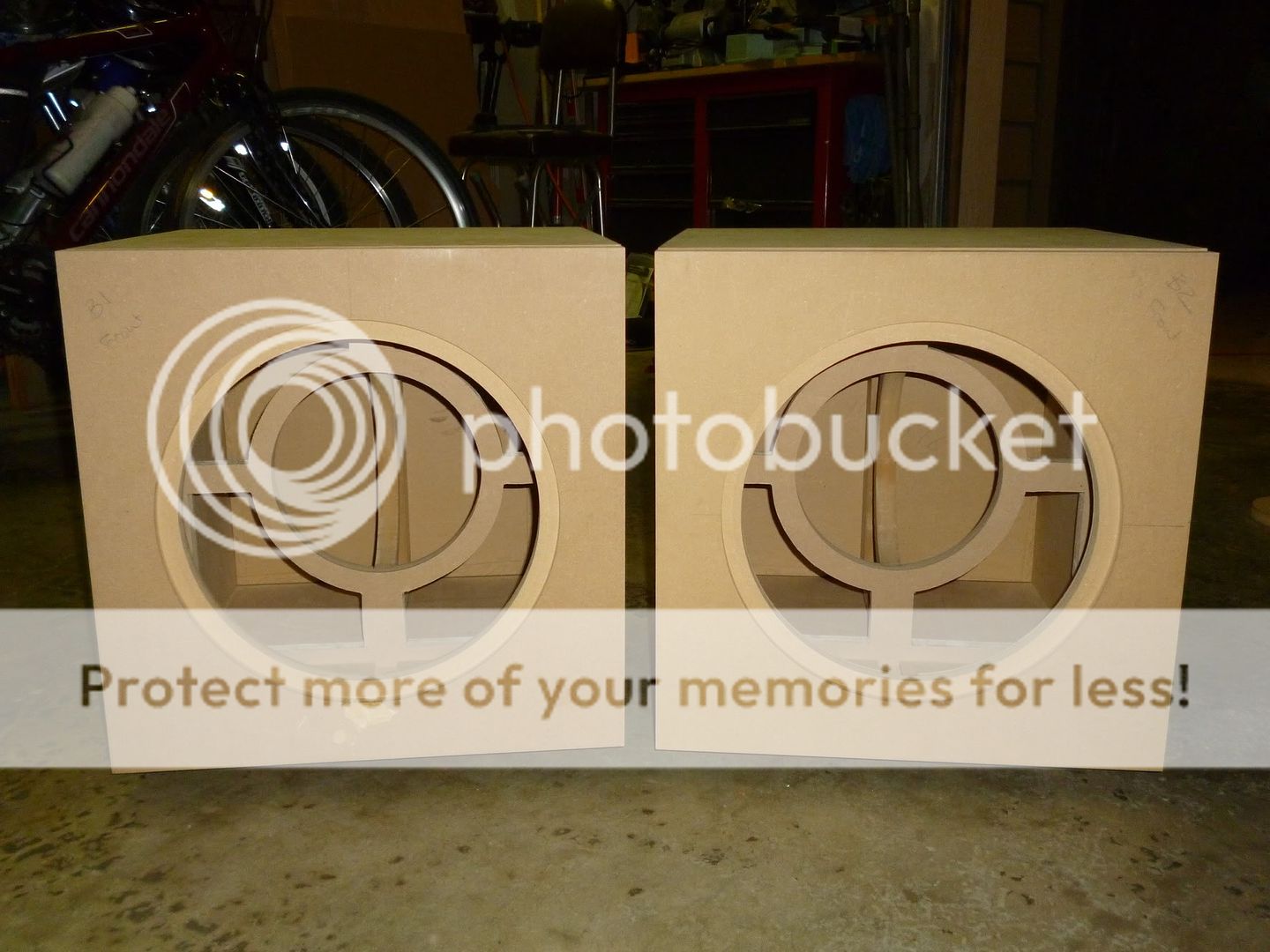
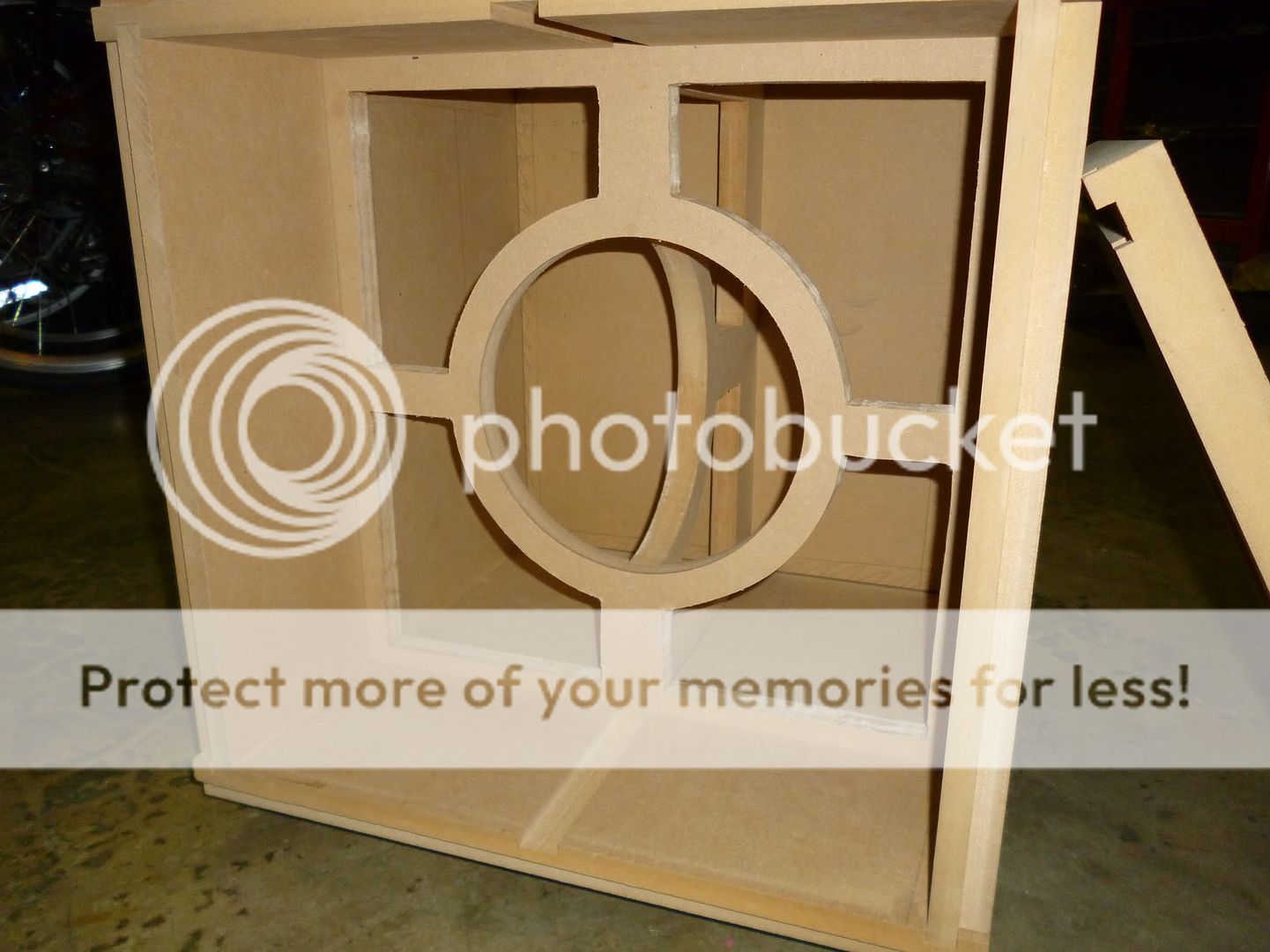
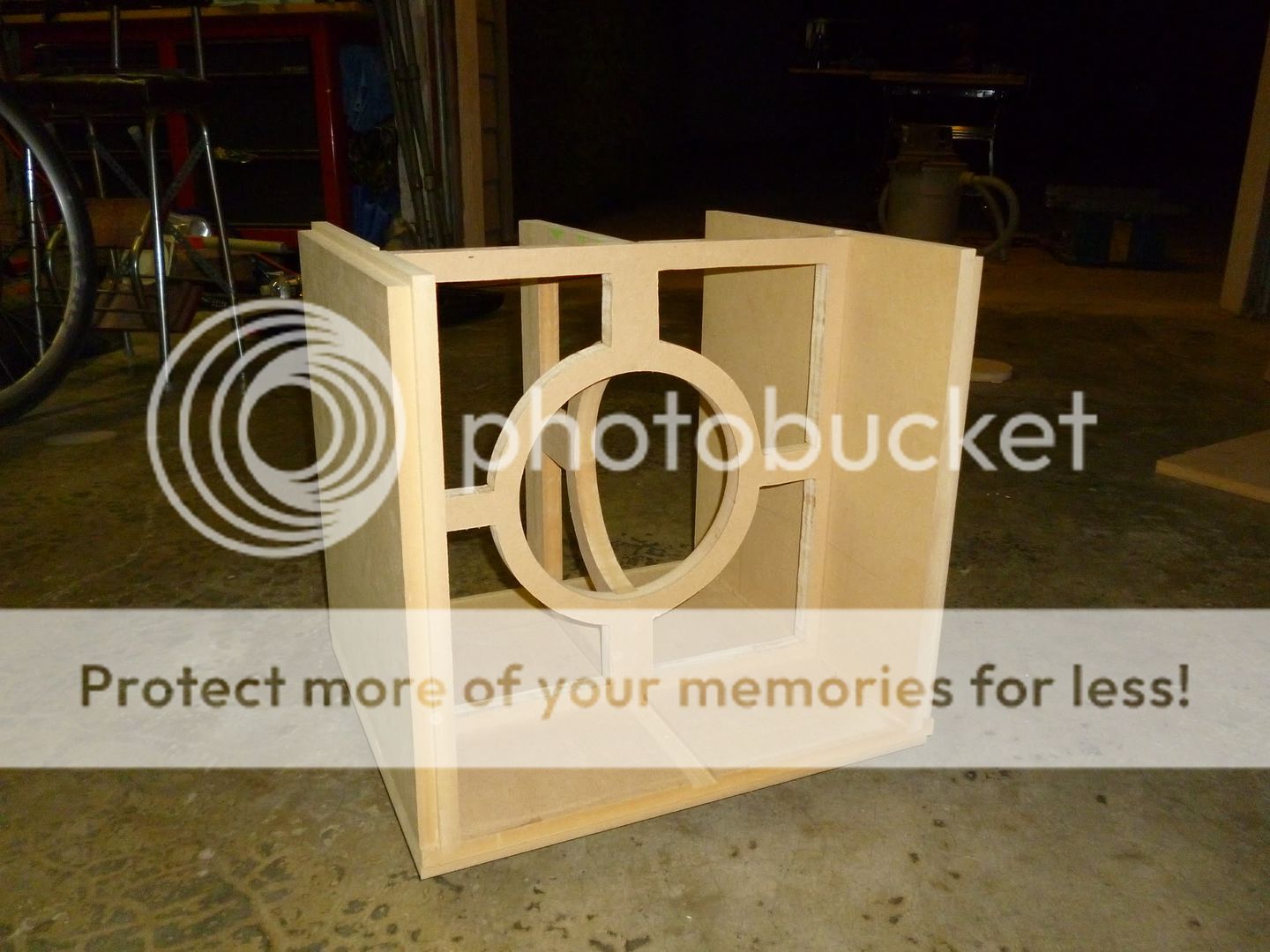
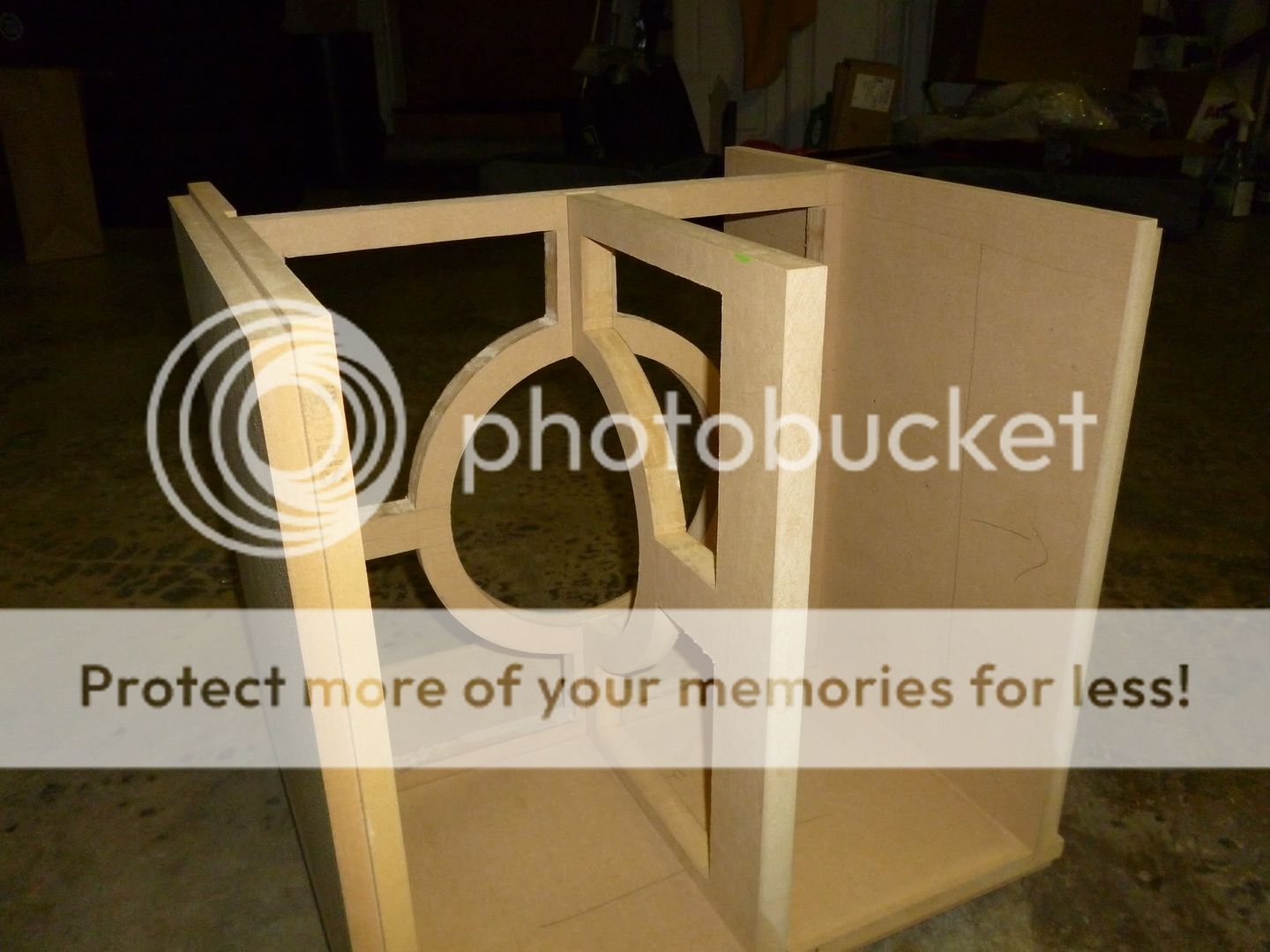
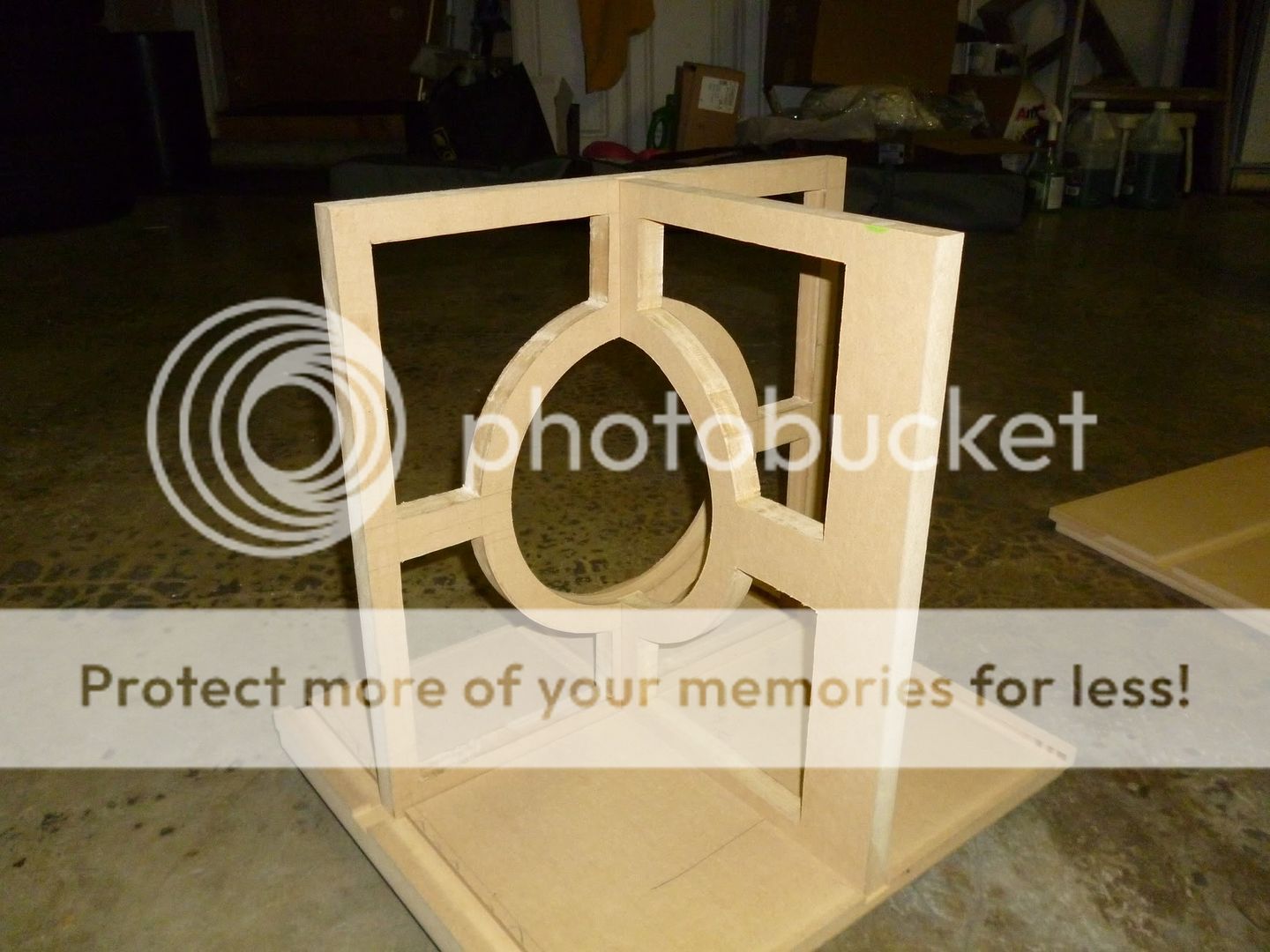
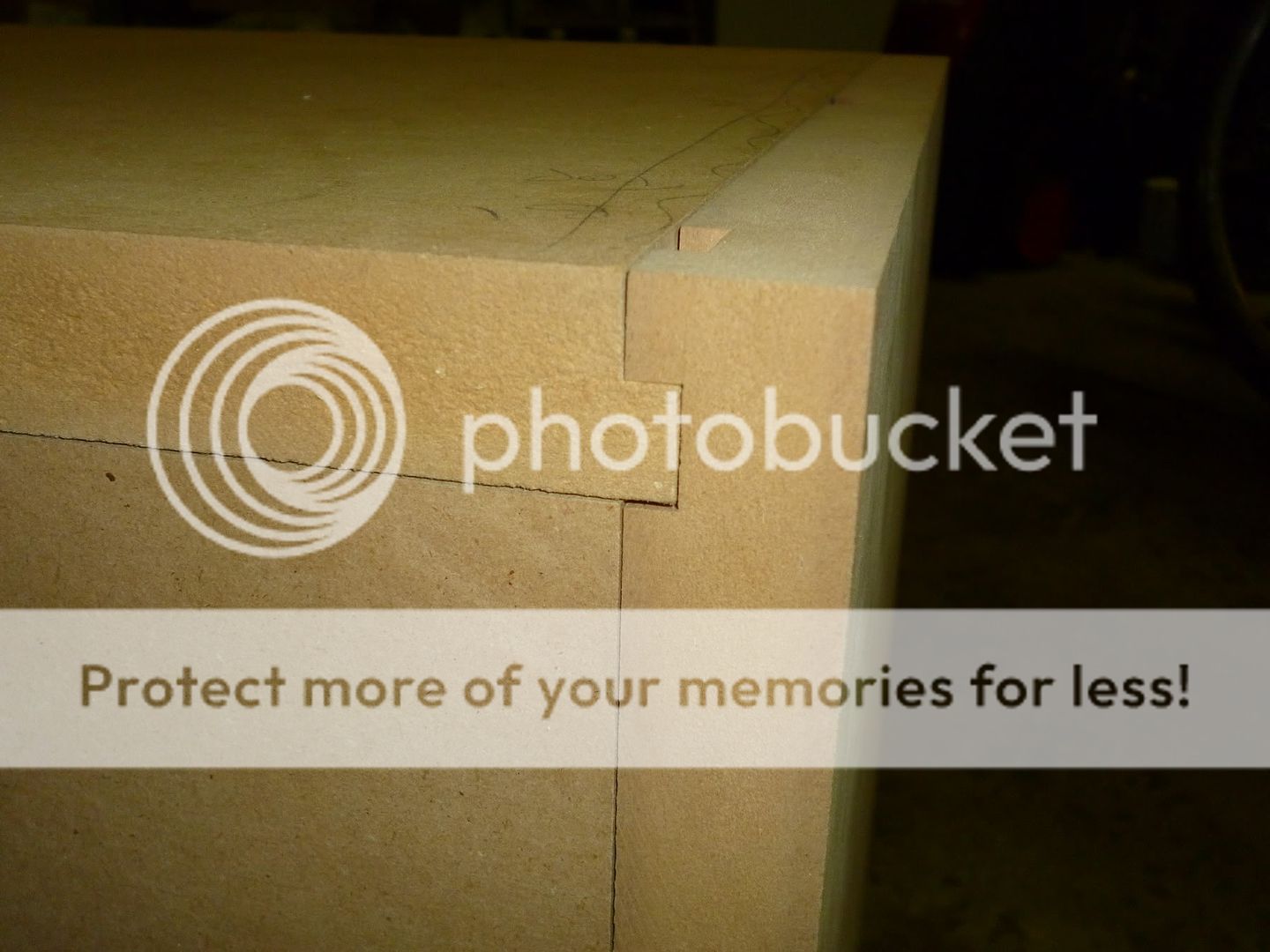

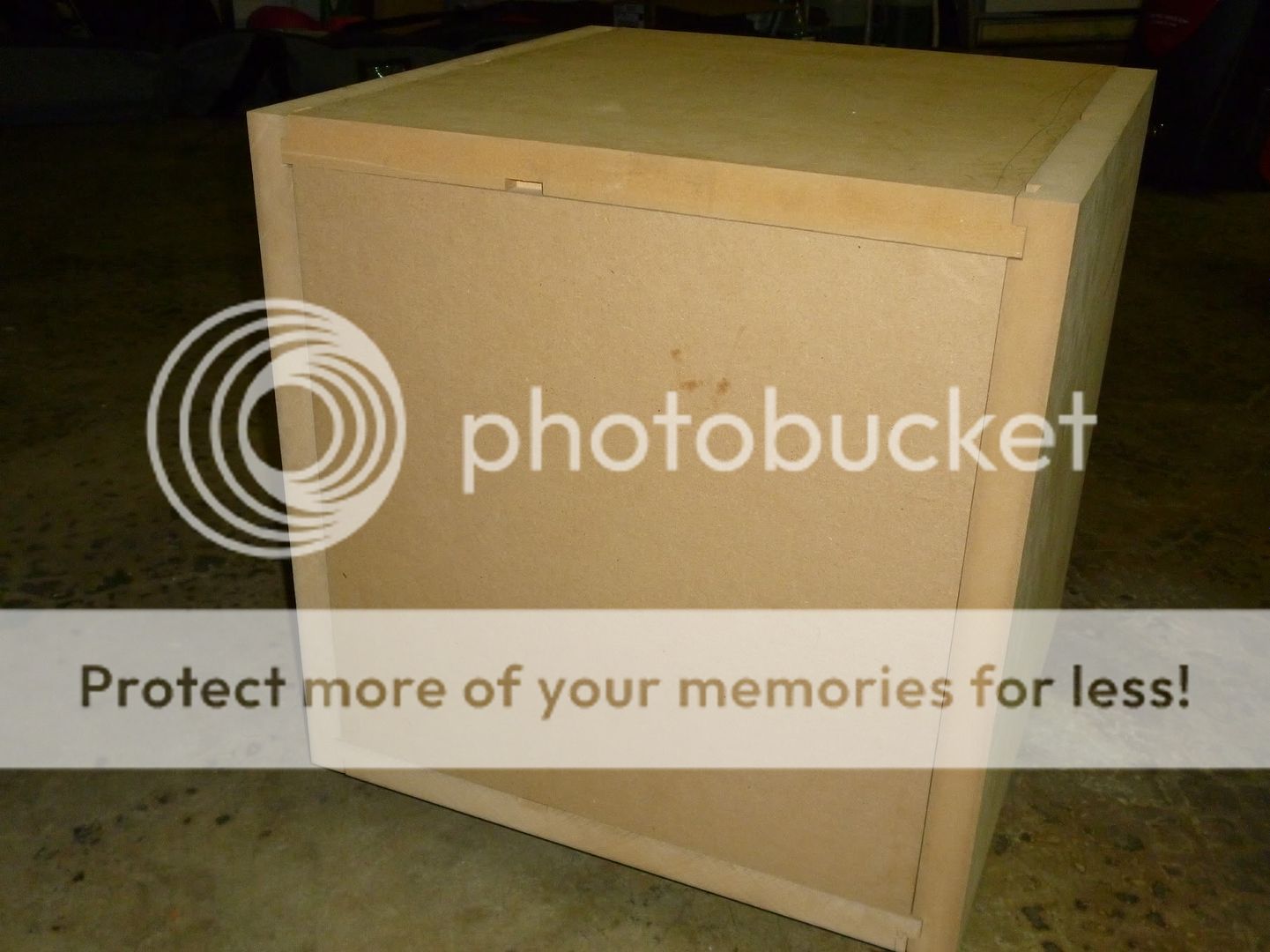
Big progress with these. Finally finished making the boxes. Bracing is a bit excessive, but the resonant frequency should be about ten times higher than the xo point. Only things left to do are to glue the panels, fill holes/gaps with wood putty, prime/seal, paint, and wrap them in vinyl (Oracal 651 matte black if anyone is interested). Then I need to fill with pink fiberglass insulation and install the driver. I'm using a Neutrik NL2MP for the speaker connector instead of binding posts. So, without much more ado, i give thee subwoofers!








- Status
- This old topic is closed. If you want to reopen this topic, contact a moderator using the "Report Post" button.
- Home
- Loudspeakers
- Subwoofers
- Sealed sub with RSS315HF and Linkwitz Transform at 10Hz